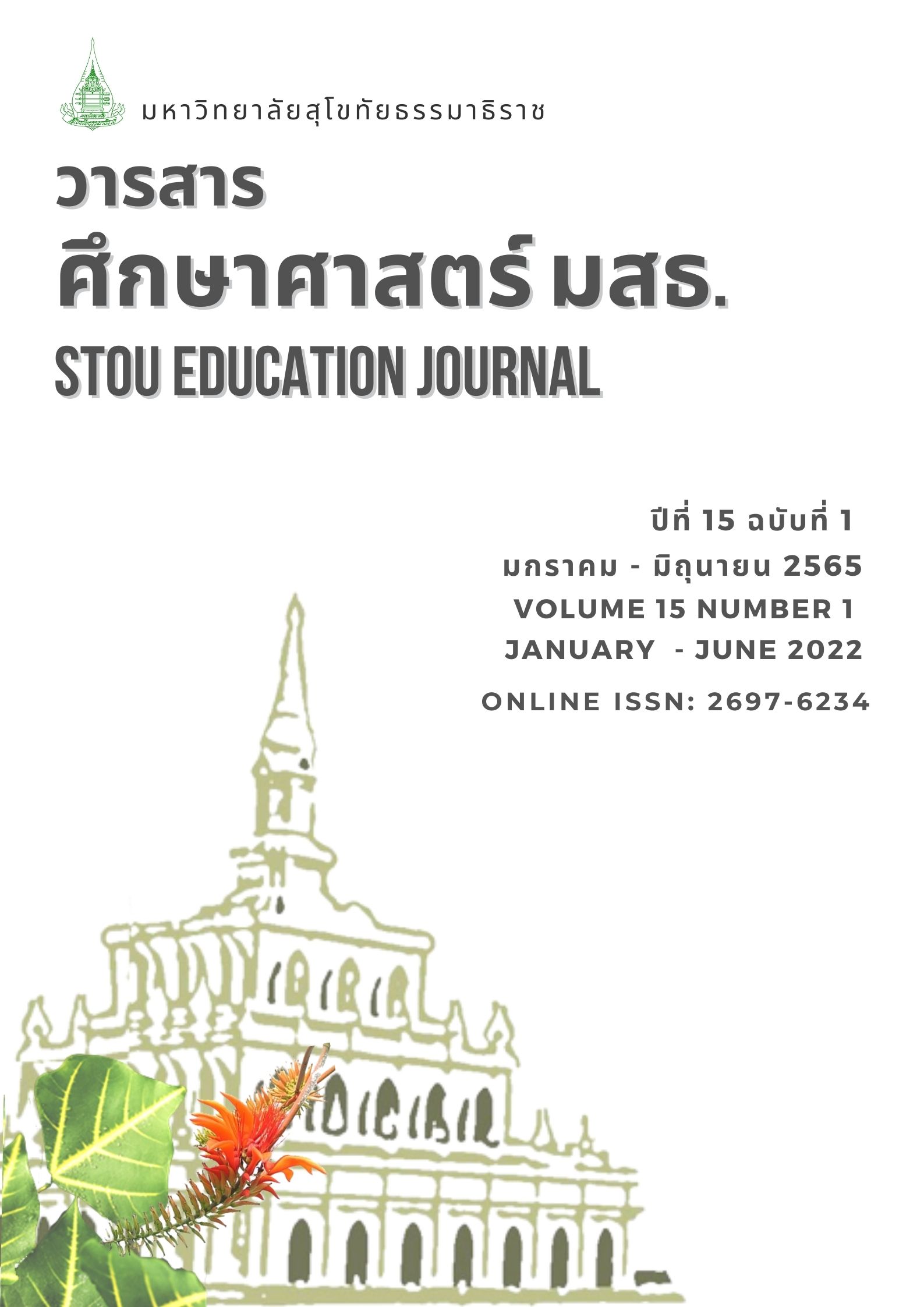Learning Activities to Enhance the Mathematical Modelling in Mathematical Problem Solving on Derivatives and Applications of Derivatives
Main Article Content
Abstract
The purposes of this research were to study the guideline for implementing learning activities to enhance the mathematical modelling and to study the ability to create mathematical models after using learning activities on derivatives and applications of derivatives of 40 first-year undergraduate students, who enrolled in Calculus in the first semester of the academic year 2021. The students were majoring in Radiological Technology, Faculty of Health Science Technology, HRH Princess Chulabhorn College of Medical Science, Chulabhorn Royal Academy. The research tools were lesson plans designed to enhance the mathematical modelling, activity worksheets and supplementary worksheets, a mathematical modelling test, a teacher reflection form, and students' journals. The results showed that the guideline for implementing learning activities is to engage the students to practice each steps of mathematical modelling with the teacher’s assistance. The steps of the mathematical modelling were Step 1: understanding and analyzing the situation or problem, Step 2: creating and defining mathematical models, Step 3: using mathematics to calculate the solution of mathematical models, Step 4: interpreting and making a conclusion, Step 5: verifying the conclusion, and Step 6: assessing for decision making or improving the model or creating a new model. After completing all the 3 cycles, 80% or more of the students are able to create mathematical models at the professional level.
Article Details
References
ชนิดา จำปาอ่อน. (2562). การจัดการเรียนรู้ตามแนวคิดการศึกษาคณิตศาสตร์ที่เชื่อมโยงกับชีวิตจริงเพื่อส่งเสริมความสามารถในการแก้ปัญหาทางคณิตศาสตร์สำหรับนักเรียนชั้นมัธยมศึกษาปีที่ 6. วารสารวิชาการศิลปศาสตร์และวิทยาศาสตร์ มหาวิทยาลัยราชภัฏชัยภูมิ, 8(2), 1-13.
ธัชพล พลรัตน์, รุ่งฟ้า จันท์จารุภรณ์ และ พิศุทธวรรณ ศรีภิรมย์ สิรินิลกุล. (2563). การศึกษาสภาพการเรียนการสอนคณิตศาสตร์ที่เกี่ยวข้องกับการใช้ตัวแบบเชิงคณิตศาสตร์เพื่อแก้ปัญหาสถานการณ์จริง เรื่องการประยุกต์ของแคลคูลัส ระดับมัธยมศึกษาตอนปลาย. Humanities, Social Sciences and arts, 12(5), 474-492.
ยุพิน พิพิธกุล. (2545). การเรียนการสอนคณิตศาสตร์. บพิธการพิมพ์.
รุ่งทิวา บุญมาโตน วนินทร สุภาพ และ รัชฎา วิริยะพงศ์. (2561). การพัฒนาการรู้เรื่องคณิตศาสตร์ เรื่องความน่าจะเป็นของนักเรียนชั้นมัธยมศึกษาปีที่ 5 ด้วยการจัดการเรียนรู้โดยใช้บริบทเป็นฐาน. วารสารวิทยบริการ มหาวิทยาลัยสงขลา นครินทร์, 29(2), 51-61.
สกล ตั้งเก้าสกุล และ อัมพร ม้าคนอง. (2560). การพัฒนาชุดกิจกรรมทางคณิตศาสตร์ตามแนวคิดการใช้บริบทเป็นฐาน ร่วมกับการสร้างแบบจำลองทางคณิตศาสตร์ เพื่อส่งเสริมความสามารถในการเชื่อมโยงความรู้คณิตศาสตร์ และเจตคติต่อวิชาคณิตศาสตร์ของนักเรียนชั้นมัธยมศึกษาปีที่ 3. วารสาร อิเล็กทรอนิกส์ทางการศึกษา, 12(3), 442-458.
สถาบันส่งเสริมการสอนวิทยาศาสตร์และเทคโนโลยี. (2563). PISA 2021 กับการประเมินความฉลาดรู้คณิตศาสตร์. FOCUS ประเด็นจาก PISA, 53, 1-4.
Anhalt, C. O., & Cortez, R. (2016). Developing understanding of mathematical modelling in secondary teacher preparation. Journal of Mathematics Teacher Education, 19(6), 523-545.
Kemmis, S & McTaggart, R. (1988). The action research planer (3rd ed.). Deakin University.
National Council of Teachers of Mathematics. (2000). Principles and standards for school mathematics. NCTM.
Polya. (1957). How to solve it (3rd ed.). Doubleday.


